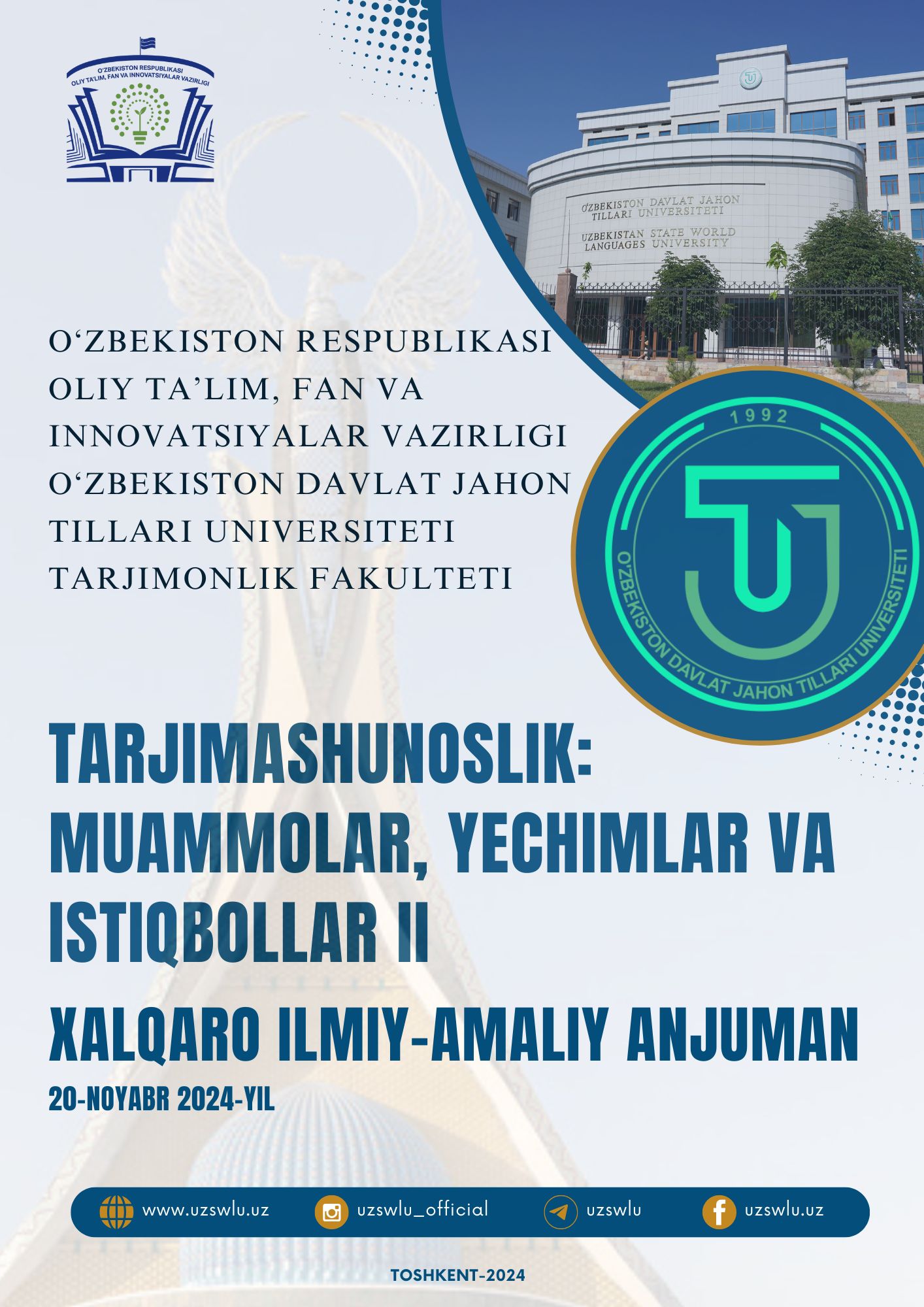BASIC PRINCIPLES OF SIMULTANEOUS INTERPRETATION
Kalit so‘zlar
simultaneous interpretation, cognitive load, active listening, bilingualism, language processing, memory, ear-voice spanAnnotasiya
Simultaneous interpretation is an intricate cognitive process that involves the real-time transfer of meaning from a source language to a target language while maintaining fidelity to the original message. As one of the most demanding forms of interpreting, SI requires a unique blend of linguistic, cognitive, and practical skills to ensure accuracy and fluency. This article delves into the core prin ciples of simultaneous interpretation: active listening, rapid cognitive processing, speech delivery, and linguistic equivalence.
Foydalanilgan adabiyotlar ro‘yhati
Baddeley, A. (2007). Working Memory, Thought, and Action. Oxford University Press.
Chernov, G. V. (2004). Inferences in Simultaneous Interpretation: A Probability-Prediction Model. John Benjamins Publishing.
Ericsson, K. A. (2006). The Cambridge Handbook of Expertise and Expert Performance. Cambridge University Press.
Azizova, N. E. (2021). Corpora and corpus linguistic approaches to study business language. Science and Education, 2(1), 266-271.
Esanboyevna, N. A. (2023). Frazeologiyaning zamonaviy antroposentrik aspekti. Ustozlar uchun, 44(6), 2-6.

